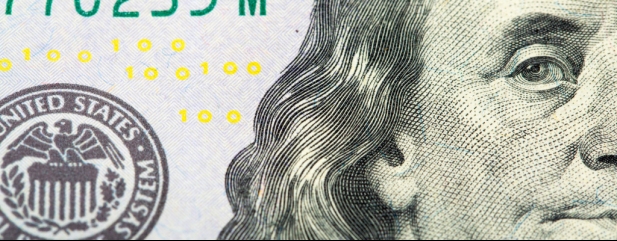Archived article
Please note that tax, investment, pension and ISA rules can change and the information and any views contained in this article may now be inaccurate.
US inflation remains sticky, but some there are signs it could be peaking

Inflation data coming in hotter than expected has become a regular feature over the last few months and the latest US PCE (personal consumer expenditure) data continued the trend.
PCE is the Federal Reserve’s preferred inflation gauge and the index advanced by 5.1% year-on-year in September, slightly higher than August’s 4.9% reading.
Core inflation excluding volatile food and energy prices increased 0.5% month-on-month, matching August’s reading and reducing the chance of an immediate pivot away from rate increases. For now investors may have to content themselves with any commentary from the US Federal Reserve which suggests we are at least approaching the peak for monetary tightening.
Meanwhile the decision of Russia to pull out of a Black Sea grain deal could add to global inflationary pressures.
And yet despite the relentless move higher in prices, US 10-year treasury yields fell back below 4% in the last week of October as investors sensed a slowdown in some components of the inflation basket.
As well as lower oil and gas prices, the US property prices notched up a second straight month-on-month decline in August as the rising cost of mortgages crimped demand. Interest rates on mortgages have doubled since the start of the year to 7%.
Investment bank ING is forecasting a 20% decline in US property prices as the cost-of-living crisis, falling stock market and rising mortgage costs squeeze demand.
US property prices have surged more than 40% since the start of the pandemic according to the S&P Case Shiller index. ING reckons the median price for an existing home is higher today than during the housing boom of the mid-2000s.
ING expects falling property prices to feed through to lower rents, albeit with a lag which should act as a drag on inflation. Owner equivalent rent represents around a third of the consumer price index basket.
The prospect of softer property prices is unlikely to sway the Fed which is focused on ‘substantive’ signs that inflation is falling back towards its 2% target before pausing rate hikes.
An important metric for the Fed is the labour market which remains very tight with nearly two vacancies for every unemployed American, and as many as three in some states.
It is likely the Fed will stay the course until the labour market loosens because of the risk that inflation expectations become imbedded, which makes inflation harder to crack.
A brighter piece of news in that regard showed (28 October) a sharp slowdown in private sector wage growth which increased 1.2% in the third quarter compared with 1.6% in the prior quarter.
Meanwhile, the latest University of Michigan inflation expectations survey increased to 2.9% from 2.7% in October. The survey measures where participants expect inflation to be on average in five years’ time.
Important information:
These articles are provided by Shares magazine which is published by AJ Bell Media, a part of AJ Bell. Shares is not written by AJ Bell.
Shares is provided for your general information and use and is not a personal recommendation to invest. It is not intended to be relied upon by you in making or not making any investment decisions. The investments referred to in these articles will not be suitable for all investors. If in doubt please seek appropriate independent financial advice.
Investors acting on the information in these articles do so at their own risk and AJ Bell Media and its staff do not accept liability for losses suffered by investors as a result of their investment decisions.
Issue contents
Editor's View
Feature
Great Ideas
News
- Investors turn wary eye to Marks & Spencer and Primark-owner
- US inflation remains sticky, but some there are signs it could be peaking
- Halfords investors rejoice as the retailer’s share price finally starts to recover
- Why shares in On The Beach remain down in the dumps
- RELX and CentralNic stand out in latest batch of earnings upgrades and downgrades
- Lula stages remarkable political comeback to lead Brazil for a third term
 magazine
magazine








